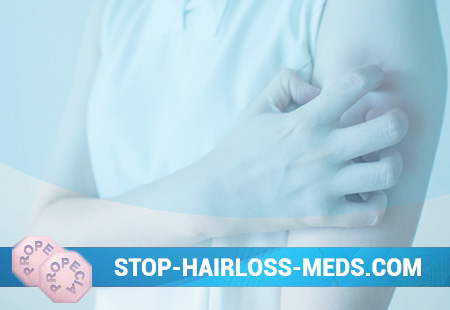What is Itchy Skin?
This is an independent disease. Its main manifestation is a long-existing itch, leading to scratching on the body. Subjective sensations of itching are caused by the participation of all sensitive skin apparatus.
Pathogenesis during Itching
Itching is divided, depending on its prevalence, into generalized, or universal, and localized, or limited. Localized itching most often affects the area of the external genitalia – this is the vulva in women, the scrotum in men and the anus. Limited skin itching also occurs in the area of the inner surfaces of the thighs, legs, neck, and head.
The basis of localized itching are:
- helminthic infestation (especially pinworms),
- inflammation of the vulva,
- vaginal inflammation,
- vaginal inflammation,
- inflammation of the anus.
Vegetoneurosis, neuropsychic, neurosexual, endocrine disorders are also of great importance. Generalized pruritus is based on metabolic disorders in elderly patients (senile pruritus), intoxication (pruritus in pregnant women), as well as unknown reasons.
Symptoms of Itchy Skin
The manifestations of skin itching are secondary morphological elements, such as: excoriation, crusts with point and linear hemorrhages. Itching appears paroxysmally, more often in the evenings or nights, less often – in the afternoon.
It can be of varying intensity: from mild to debilitating, leading to a decrease in the patient’s working capacity, and insomnia. Long-existing skin itching in some patients leads to a change in nails, which acquire a polished or “polished” look. If lichenization appears as a result of a long-lasting severe itching, then we are talking about the transition of skin itching to neurodermatitis.
Diagnosis of Skin Itch
The diagnosis of this disease is made after the exclusion of all skin diseases, blood, liver, kidney, metabolic diseases, i.e., all pathologies in which, among other symptoms, there is a fairly pronounced itching of the skin. With pruritus, there are no primary morphological elements.
Itchy Skin Treatment
Antihistamines are prescribed: diazolin 0.05-0.1 g 2-3 times a day, suprastin, pipolfen 0.025 g 3 times a day. All these agents can also be used as intramuscular injections for a more pronounced calming effect. Calcium preparations are also used in the form of a 10% solution of calcium chloride intravenously or a 10% solution of calcium gluconate intramuscularly.
Elderly people are recommended phytotherapy in the form of a decoction of horsetail (1 tbsp. L. Per 1 cup of boiling water, insist 1.5 hours and drink in sips during the day). Duration of admission is 2.5 weeks. With especially persistent and painful itching, glucocorticoid drugs are prescribed if there are no contraindications to their use.
If the patient has neurotic disorders, then it is advisable to use sedatives, such as bromine, valerian, as well as tranquilizers (seduxen, elenium, trioxazine, librium). Physiotherapeutic treatment is widely used in the form of hydrogen sulfide or radon baths, sea bathing, as well as baths with a decoction of oak bark, a string, bran. With generalized itching, the skin is rubbed with a 1-2% alcohol solution of thymol, carbolic acid, menthol. In order to reduce dry skin, vitamins A, B2, B3 are prescribed, and externally – emollient creams. With limited itching, corticosteroid ointments are used: Sinalar, Lokacorten, 1-2% prednisone ointment, 3-5% boron tar ointment, creams with sex hormones (primarily androgens) – methyltestosterone or testosterone propionate.

